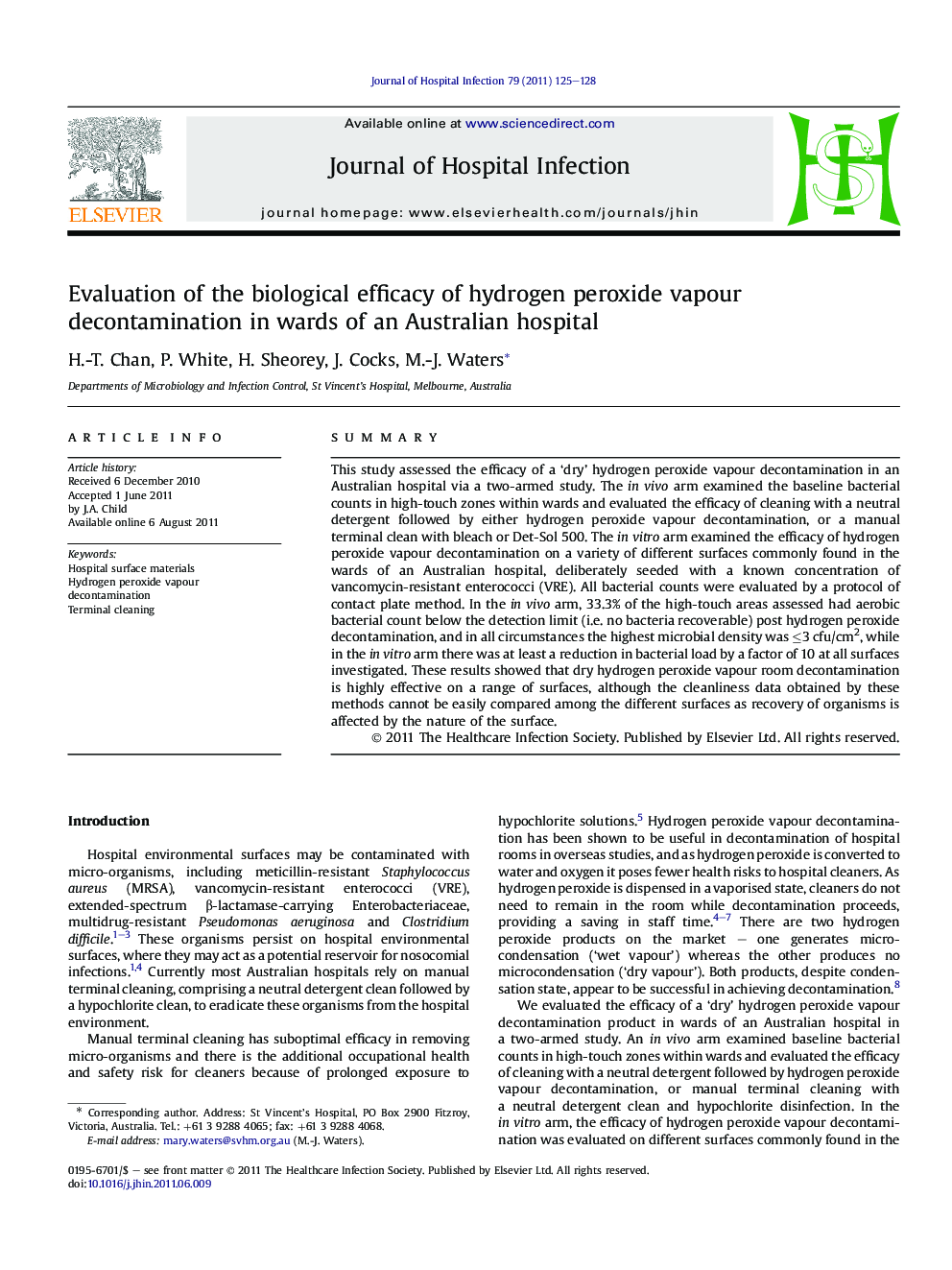| Article ID | Journal | Published Year | Pages | File Type |
|---|---|---|---|---|
| 3372055 | Journal of Hospital Infection | 2011 | 4 Pages |
SummaryThis study assessed the efficacy of a ‘dry’ hydrogen peroxide vapour decontamination in an Australian hospital via a two-armed study. The in vivo arm examined the baseline bacterial counts in high-touch zones within wards and evaluated the efficacy of cleaning with a neutral detergent followed by either hydrogen peroxide vapour decontamination, or a manual terminal clean with bleach or Det-Sol 500. The in vitro arm examined the efficacy of hydrogen peroxide vapour decontamination on a variety of different surfaces commonly found in the wards of an Australian hospital, deliberately seeded with a known concentration of vancomycin-resistant enterococci (VRE). All bacterial counts were evaluated by a protocol of contact plate method. In the in vivo arm, 33.3% of the high-touch areas assessed had aerobic bacterial count below the detection limit (i.e. no bacteria recoverable) post hydrogen peroxide decontamination, and in all circumstances the highest microbial density was ≤3 cfu/cm2, while in the in vitro arm there was at least a reduction in bacterial load by a factor of 10 at all surfaces investigated. These results showed that dry hydrogen peroxide vapour room decontamination is highly effective on a range of surfaces, although the cleanliness data obtained by these methods cannot be easily compared among the different surfaces as recovery of organisms is affected by the nature of the surface.
